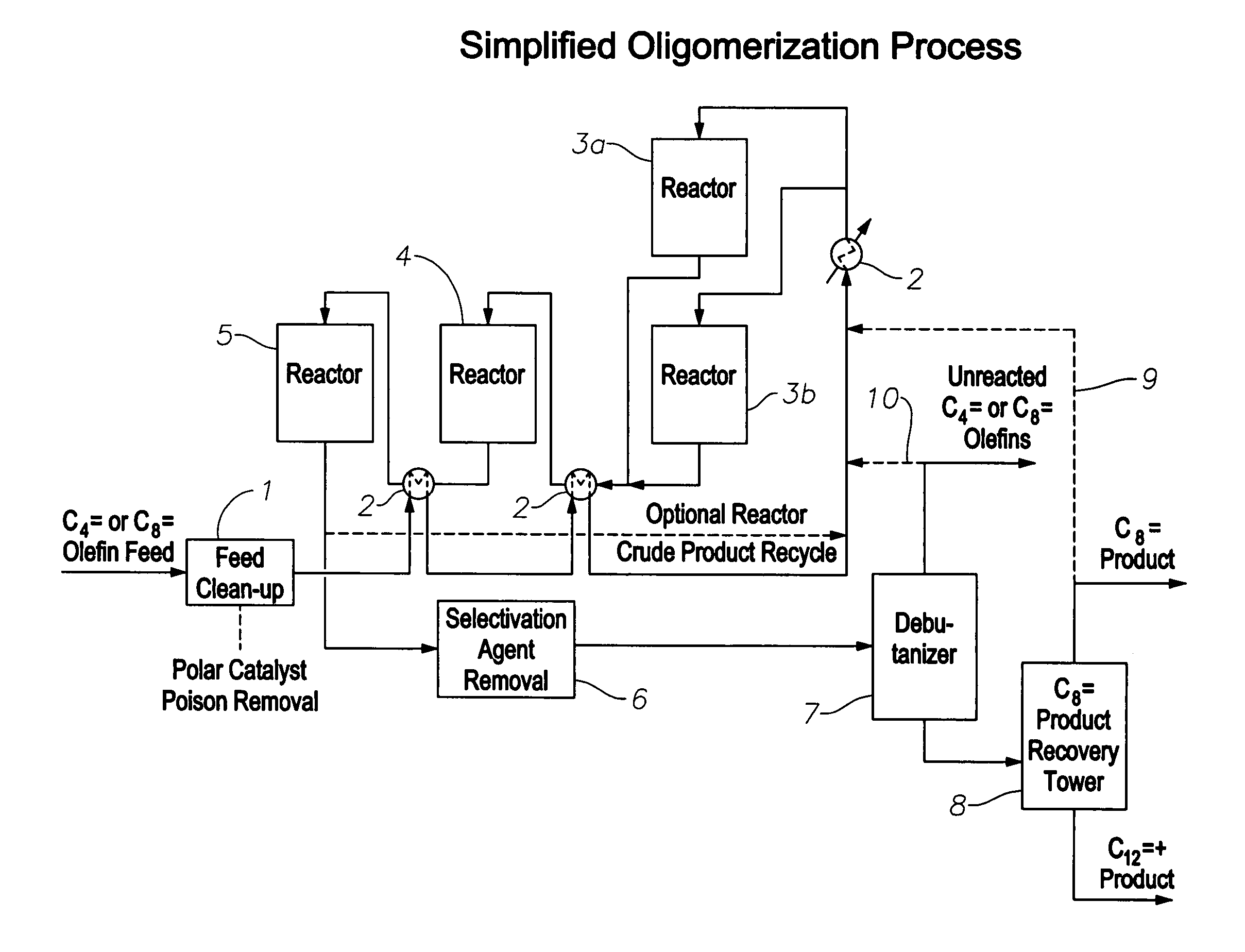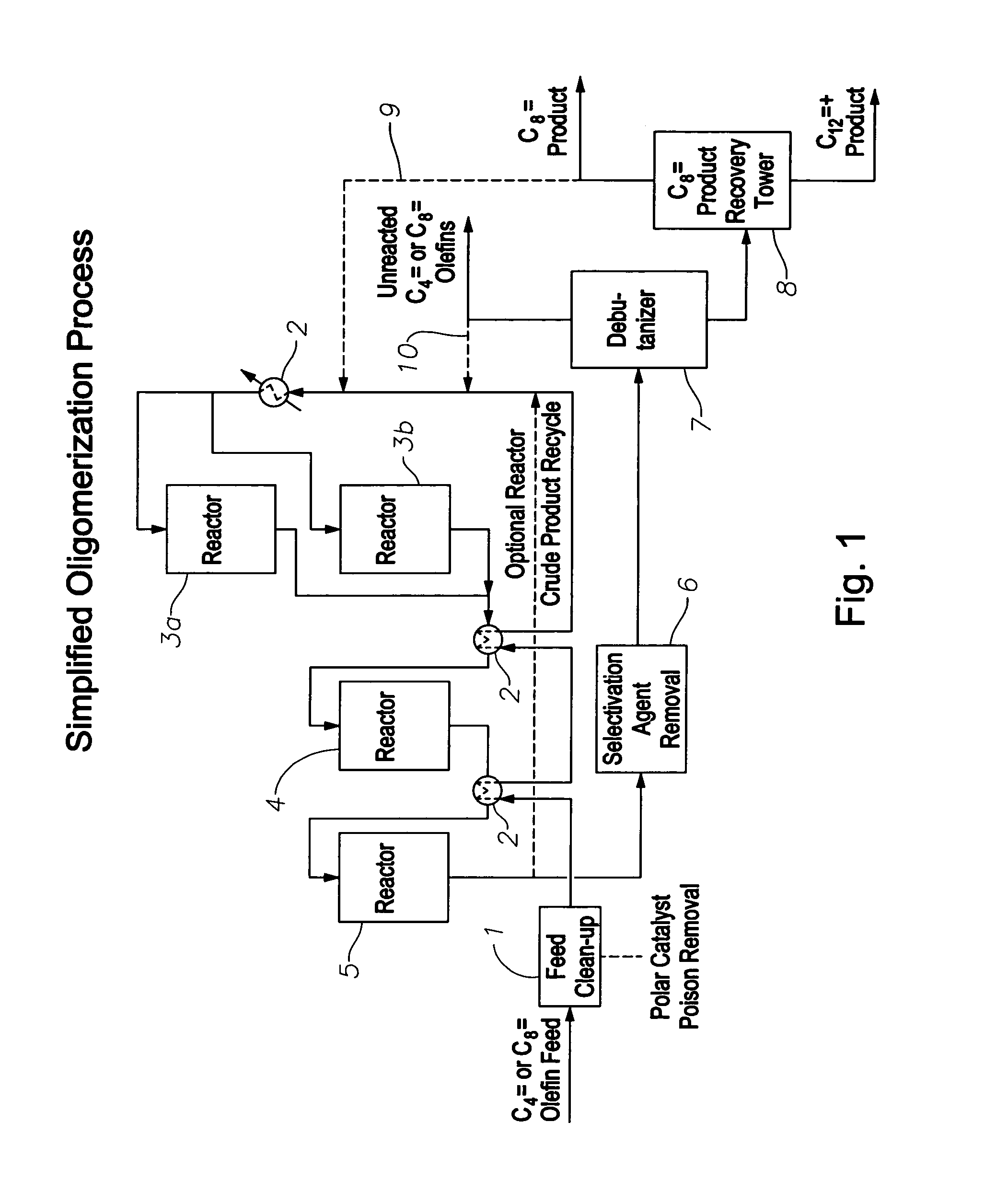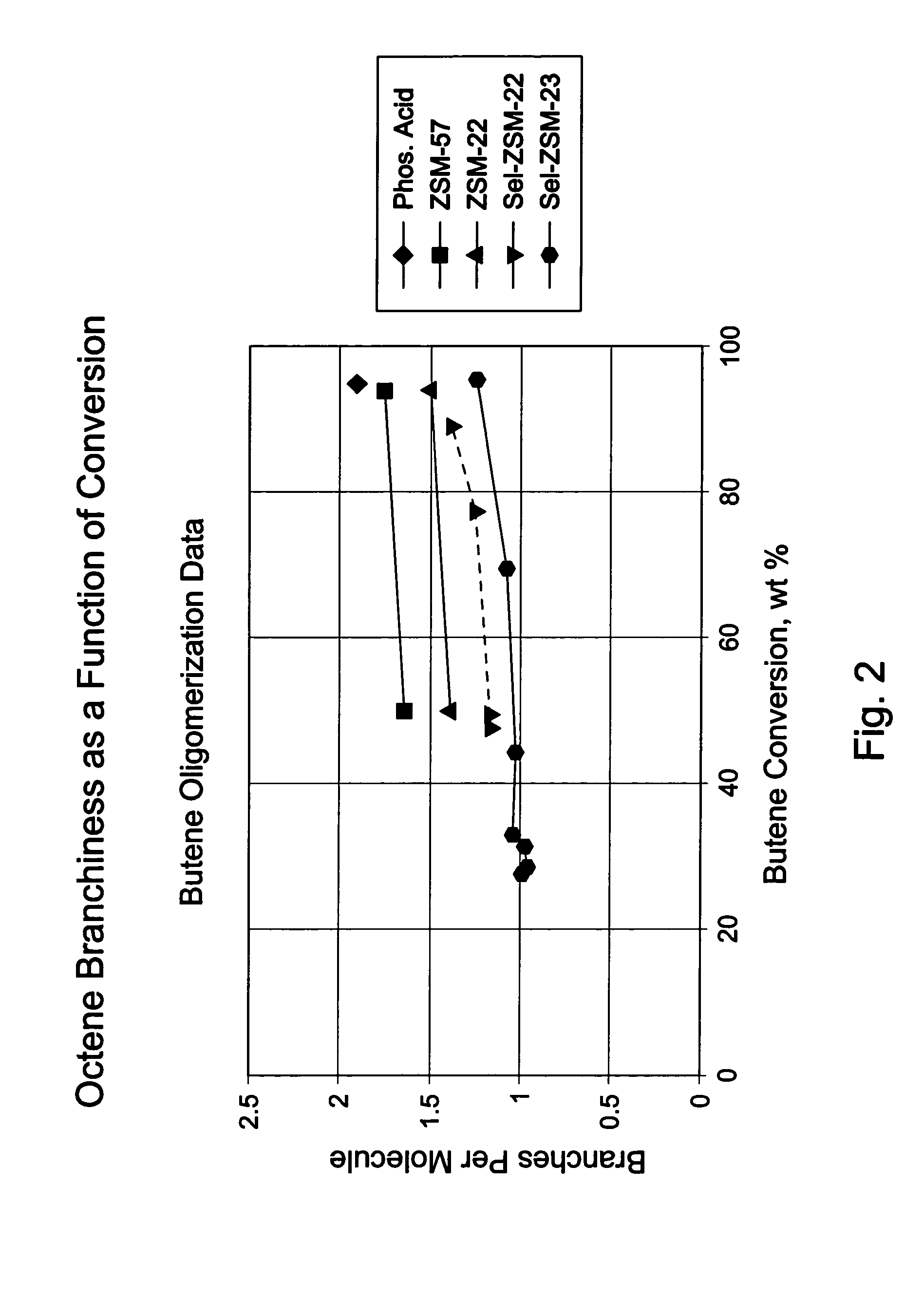Oligomerization of olefins
a technology of oligomerization and olefins, which is applied in the direction of hydrocarbon by hydrocarbon cracking, hydrocarbon preparation catalysts, non-ionic surface active compounds, etc., can solve the problems of increasing cost and scarce feedstocks, and achieve enhanced linearity and high branched
- Summary
- Abstract
- Description
- Claims
- Application Information
AI Technical Summary
Benefits of technology
Problems solved by technology
Method used
Image
Examples
examples a
to G
Selectivation of Catalyst
[0082]A 50 g sample of ZSM-23 zeolite (SiO2:Al2O3 ratio 110:1, α value 22), in the form of a 1 / 16 inch (about 1.6 mm) cylindrical extrudate consisting of 65% zeolite and 35% alumina binder was immersed in 60 ml of pentane. 0.235 g of collidine (99%, Aldrich) dissolved in 40 ml pentane were added, equivalent to 0.2 mole of collidine per mole of acid sites, calculated from the silica to alumina ratio. After an hour with occasional shaking the pentane was removed by purging with nitrogen, then the catalyst was dried under vacuum to constant weight and stored under vacuum until used. Samples of catalyst were treated with different weights of collidine to give different levels of collidine per acid site as set out in Table I below.
[0083]
TABLE Img collidine / % Mole collidine / Exampleg catalystMole Acid SitesA1.175B2.3510C3.5215D4.7020E5.8725F7.0430G11.750An untreated sample H was used as control.
examples 1 to 7
[0084]8 g portions of each of samples A to H were diluted with sand and loaded into a fixed bed tubular reactor and dried at 150° C. with a flow of nitrogen. This heating also ensured that the collidine reached the most active acid sites. Maintaining the temperature at 150° C., a butene feed (54% cis-2-butene, 41% trans-2-butene, 1% 1-butene plus isobutene, and 3% butane) was fed into the reactor at 60 ml / hr for 2 hours then at 2.56 ml / hr (0.2 WHSV) while increasing the pressure to 750 psig (about 5.2 MPa). After this pressure was reached, the reactor temperature was increased at 2° C. / min to 200° C. Liquid products were collected in a cold trap; flow rate was adjusted to give approximately 50% conversion; conversion was determined by measuring unreacted butene, in offgas and in the liquid product, against feed.
[0085]Product carbon number distribution was determined by gas chromatography. Product branching was determined using in situ hydrogenation gas chromatography, with H2 as car...
PUM
| Property | Measurement | Unit |
|---|---|---|
| pressure | aaaaa | aaaaa |
| pressure | aaaaa | aaaaa |
| pressure | aaaaa | aaaaa |
Abstract
Description
Claims
Application Information
 Login to View More
Login to View More - R&D
- Intellectual Property
- Life Sciences
- Materials
- Tech Scout
- Unparalleled Data Quality
- Higher Quality Content
- 60% Fewer Hallucinations
Browse by: Latest US Patents, China's latest patents, Technical Efficacy Thesaurus, Application Domain, Technology Topic, Popular Technical Reports.
© 2025 PatSnap. All rights reserved.Legal|Privacy policy|Modern Slavery Act Transparency Statement|Sitemap|About US| Contact US: help@patsnap.com



